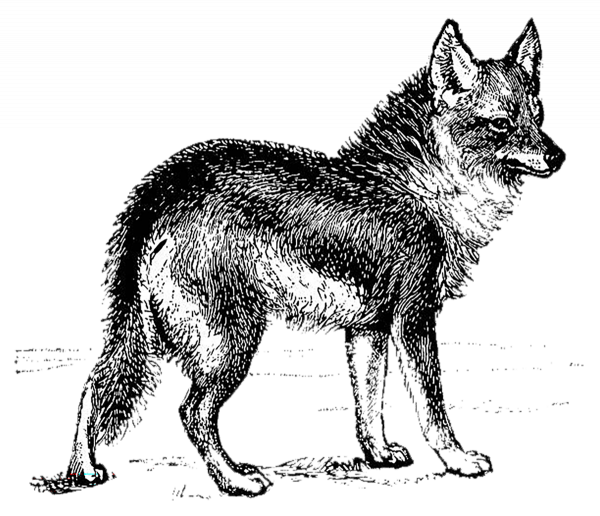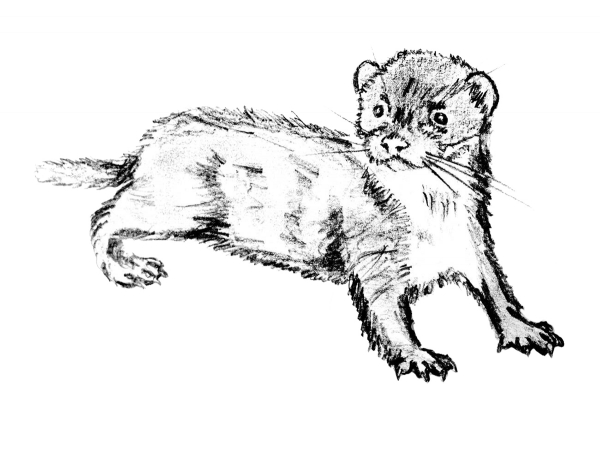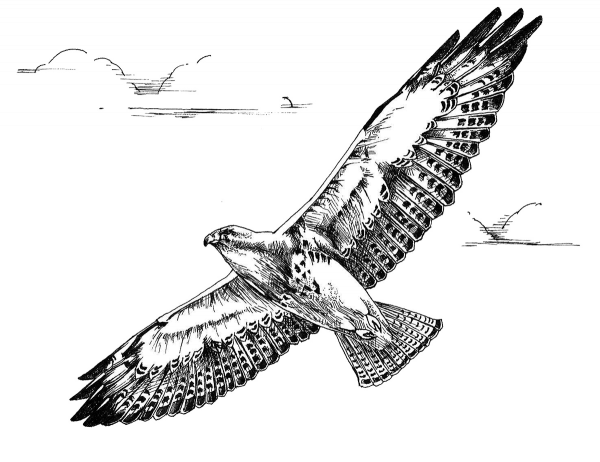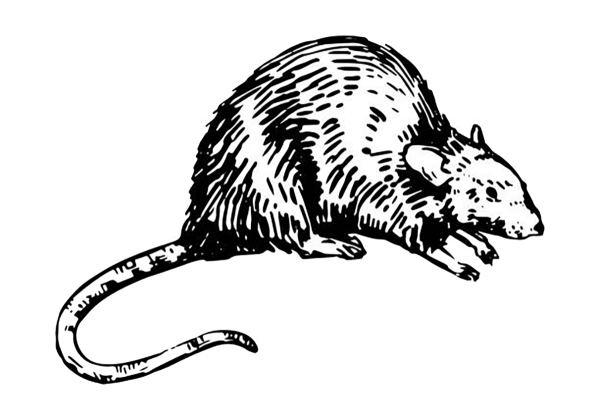This is the eleventh in a Series of Reminiscences by E. R. Brown. Brown was born in Pulaski County on August 9, 1845. His writings are abstracted from the Pulaski County Democrat on microfilm housed in the Pulaski County Public Library, Winamac, Indiana. Find links to earlier entries at the end of this article.
Published in Pulaski County Democrat, April 22, 1922

I have deemed early animal pests and birds of prey as of such importance that my pleasant task would be incomplete without some mention of them. Why we never had any really dangerous creatures roaming or soaring around here is indeed something of a mystery, as was often remarked early. Timber wolves and bobcats, at least, infested other parts of the state, some resorting in adjoining counties. While it was unusual for either to attack a human being, they were always considerably feared. A bald eagle was occasionally seen here in my childhood and I do not recall a time when I did not know of his reputation for sometimes carrying off small children, as well as lambs and pigs. But it would be a mistake if it were said that he was seriously feared, even by the young or timid. Had it not been for the liability, therefore, that some of the dangerous creatures known elsewhere might come here and, on a dark night or in some wild lonely place, be led to do what they had been known to do before, I think the minds of all, even of children, would have been more than commonly free from anxiety or concern from that source.

The prairie wolves were the largest if not the worst early pests. No woman or even child after coming to know them, feared them in the least. Yet their persistent howling at night, in so many tones, often so weird and uncanny, got on the nerves of some people and made it harder for both old and young to be firmly convinced that they were arrant cowards, subsisting when possible on what they found dead and only attacking the weak or utterly defenseless. Their first aggressions on the early settlers were on the poultry. It was not unusual for one measly wolf, sometimes only a cub, to find his way into a hen roost, which the good housewife had carefully closed, and kill every chicken in it. Later, when people began to have more sheep, though the wolves themselves had begun to show a marked decrease, large numbers were killed by them. The most expert wolf hunter early known here was a lame man, who for that reason was obliged to ride horseback when going any distance. This gave him a peculiar advantage over the wolves. He mostly caught them in traps or poison, and always riding a horse, the wolves did not smell his tracks and suspect danger, as they were ordinarily quick to do. Once when an uncommonly large and bold marauder was ravaging my father’s flock, killing a sheep every day, sometimes two of three and all other efforts to kill him proved ineffectual, this gentleman was sent for and speedily ended our trouble. His name was Klinger and I understand some of his descendants remain here. He was really a public benefactor.

Then we had foxes, weasels, polecats, field mice, hawks, owls and others. Foxes were numerous, but the great abundance of fowl, coupled with the risks involved, was probably the reason they did not bother people. Their tracks were always thick when there was snow, but never near any house. So too with polecats. They smelled just the same seventy years ago as they do now, if not stronger then when it was in evidence more frequently. Still, the damage done was immaterial. The weasel, on the other hand, was a real pest. I am not qualified to speak of the comparative number between then and now, but it was not uncommon for one weasel to wipe out the entire brood of young chickens in a single night while to make fair headway towards doing the same with the whole flock of grown chickens in one night was not unknown.
As for hawks and owls, I have changed my mind somewhat in later years about them. I am still satisfied that one or two species of the first were guilty of all they were charged with, and still they were not wholly bad; while I believe old who-o, who-o and most species of hawks were more friends than enemies, if they were enemies at all. I confess to some sense of regret when I recall how I used to take pride in killing any kind of hawk or owl I saw or anything that looked like one.

I wonder if all my readers know that the repulsive, destructive rat was for many years unknown here? I well remember when his presence was first reported. Like the English sparrow, our common rat is an importation. He was formerly called a ‘Norway rat’. Whether or not he really is a native of Norway exclusively I do not know. I know I considered myself some boy before I ever saw one and that I would now weep briny tears if there had never been one here to see.
Links to Earlier Articles
- Part one (Common Inconveniences) October 2018 newsletter.
- Part two (Land) June 2019 newsletter.
- Part three (Trees & Timber) November 2019 newsletter.
- Part four (The River) February 2020 newsletter.
Later editions are carried as separate posts.
- Part five (Public Roads)
- Part six (Schools)
- Part seven (Markets & Trading Points)
- Part eight (It’s Mills)
- Part nine (Wild Game)
- Part ten (Feathered Wild Game)